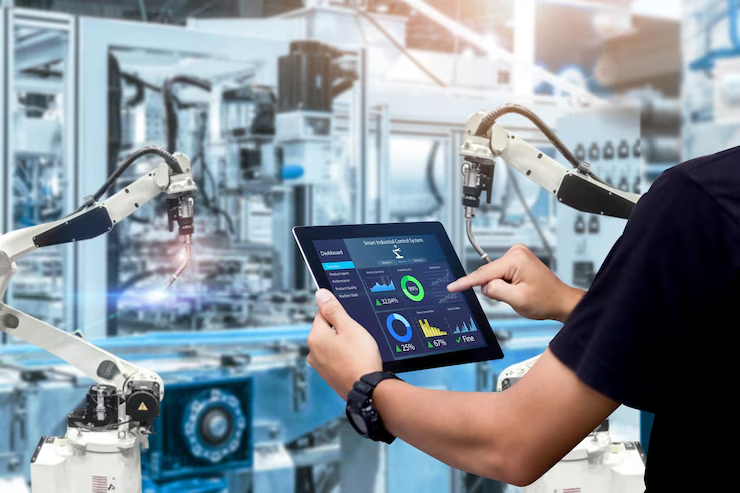Table of Contents
ToggleBig Data: The Fuel of the Digital Age

In the modern digital era, data is often Big Data referred to as the new oil. But unlike oil, data is infinitely renewable, constantly being generated, and increasingly vital for decision-making, innovation, and competitive advantage. Among the various terms and technologies shaping this data-driven world, Big Data stands out as one of the most transformative.
From personalized marketing and fraud detection to healthcare diagnostics and smart cities, Big Data powers an ever-growing range of applications. But what exactly is Big Data? What are its types, characteristics, and how is it used? This article provides an in-depth exploration of Big Data, including its definition, components, types, and the technologies enabling its storage, processing, and analysis.
What Is Meant by Big Data?
Big Data refers to extremely large and complex datasets that cannot be managed, processed, or analyzed using traditional data processing tools. These datasets are generated from a wide array of sources including social media, sensors, digital transactions, mobile devices, online videos, and much more.
The defining feature of Big Data isn’t just its size, but its volume, velocity, and variety—a concept we’ll explore further as the “3 Vs of Big Data,” later expanded to 5 or even 7 Vs by some experts.
Key Aspects of Big Data:

-
Involves terabytes to zettabytes of data.
-
Data can be structured, semi-structured, or unstructured.
-
Enables advanced analytics including machine learning, predictive modeling, and artificial intelligence.
-
Requires high-performance technologies such as Hadoop, Spark, NoSQL databases, and cloud computing.
Big Data is more than just a technological concept; it’s a paradigm shift that influences how we approach business, science, education, and governance.
The Evolution of Big Data
Historically, businesses stored and processed data in manageable amounts using relational databases like SQL. However, the exponential growth of internet use, social media, mobile devices, IoT (Internet of Things), and digital services has led to a data explosion.
A few decades ago, companies were dealing with megabytes and gigabytes. Today, data generation occurs at petabyte and exabyte levels on a daily basis. Google alone processes over 20 petabytes of data daily.
The rise of Big Data has led to the emergence of a new ecosystem—Big Data technologies that can handle the speed, scale, and complexity of this digital deluge.
What Are the 3 Types of Big Data?

Big Data can be categorized into three main types, based on the structure and source of the data.
1. Structured Data
Structured data refers to organized information that resides in relational databases or spreadsheets. It is easily searchable and can be processed using SQL-based systems.
Examples:
-
Transaction records
-
Inventory data
-
Employee databases
-
CRM systems
Characteristics:
-
Stored in rows and columns
-
Has predefined formats
-
Easy to query and manage
2. Semi-Structured Data
Semi-structured data doesn’t reside in traditional databases but has some organizational properties, such as tags or markers, that make it easier to analyze than unstructured data.
Examples:
-
XML and JSON files
-
Email headers
-
Log files
-
NoSQL data
Characteristics:
-
Doesn’t conform strictly to relational models
-
Can be analyzed using tools designed for flexibility
3. Unstructured Data Big Data
Unstructured data makes up the majority of Big Data. It has no predefined format and is often text-heavy or media-rich.
Examples:
-
Social media posts
-
Videos and images
-
Emails
-
Audio recordings
-
PDFs
Characteristics:
-
Difficult to search or manage
-
Requires advanced tools (like natural language processing or computer vision)
-
Rich in insights but challenging to analyze
What Are the Five Vs of Big Data Big Data?
The Five Vs are the widely accepted defining characteristics of Big Data. These dimensions help explain why traditional data systems struggle and what makes Big Data so powerful.
1. Volume
This refers to the amount of data generated. The scale is enormous—social media platforms alone generate billions of posts, likes, and shares daily. IoT devices, mobile apps, and sensors also contribute to this massive volume.
Example: Facebook generates over 4 petabytes of data per day.
2. Velocity
Velocity indicates the speed at which data is generated and processed. Real-time or near-real-time processing is a key requirement in many applications.
Example: Stock trading systems require millisecond-level responses to data feeds.
3. Variety Big Data
Variety pertains to the different types of data—structured, semi-structured, and unstructured—that come from numerous sources.
Example: A single customer transaction might involve text reviews, a purchase record, and voice interactions with support.
4. Veracity
Veracity deals with the quality and trustworthiness of data. With such large volumes, data inconsistencies, noise, and duplication are common.
Example: Fake reviews or incorrect sensor data can affect business insights.
5. Value
Value refers to the usefulness of data. Not all Big Data is valuable. The goal is to extract meaningful insights that drive decision-making and innovation.
Example: Analyzing shopping behavior to suggest products and increase sales.
Some experts also include Variability (inconsistency in data), Visualization (making data interpretable), and Vulnerability (data security) as additional Vs.
What Is Meant by Large Data Big Data?
“Large data” is often used synonymously with Big Data, but the context matters. Large data simply refers to datasets that are larger than traditional systems can handle efficiently, but may not exhibit the full characteristics of Big Data.
While Big Data emphasizes volume, velocity, and variety, large data may focus primarily on scale without requiring real-time processing or unstructured formats.
Example:
-
A company with 10 million customer records may have “large data.”
-
A social media platform with 1 billion daily posts has “Big Data.”
In essence, all Big Data is large, but not all large data qualifies as Big Data unless it also includes complexity, diversity, and speed.
Why Is Big Data Important?
Big Data is revolutionizing how organizations operate. Its ability to provide deep insights leads to smarter decisions, operational efficiency, personalized experiences, and competitive advantages.
Key Benefits:
-
Improved Decision-Making: Data-driven strategies are more precise and predictive.
-
Customer Insights: Understanding behavior, sentiment, and preferences.
-
Operational Efficiency: Automation and optimization of processes.
-
Innovation: Identifying new opportunities, products, and services.
-
Risk Management: Fraud detection and compliance monitoring.
How Is Big Data Collected and Stored Big Data?
Sources of Big Data:
-
Social Media: Facebook, Twitter, Instagram
-
Transactional Systems: Point-of-sale, banking systems
-
IoT Devices: Smart homes, vehicles, wearables
-
Digital Media: Streaming services, online videos
-
Web Logs: Server logs, clickstreams
Storage Technologies:Big Data
Traditional relational databases struggle with the scale and complexity of Big Data. Instead, modern solutions include:
-
Hadoop Distributed File System (HDFS): Designed for distributed storage and processing.
-
NoSQL Databases: Like MongoDB, Cassandra, Redis—ideal for unstructured and scalable data.
-
Cloud Storage: Services like AWS S3, Google Cloud Storage offer scalable, flexible solutions.
-
Data Lakes: Centralized repositories that store raw data in its native format.
Big Data Technologies and Tools Big Data
Frameworks and Platforms:
-
Hadoop: Open-source framework for distributed storage and processing.
-
Apache Spark: Lightning-fast engine for large-scale data processing.
-
Kafka: Real-time data streaming platform.
-
Flink: Stream-processing framework for high throughput Big Data.
Databases:
-
NoSQL: MongoDB, Cassandra, Couchbase
-
Graph Databases: Neo4j for relationship-heavy data
-
Time-Series Databases: InfluxDB for sensor and IoT data
Data Analytics and Visualization:
-
Tableau, Power BI, QlikView: Visualization tools.
-
R, Python, SAS: Statistical and machine learning tools.
-
Elasticsearch: Real-time search and analysis engine.
Big Data in Action: Use Cases Across Industries
1. Healthcare
-
Predictive analytics for disease outbreaks Big Data
-
Personalized treatment recommendations
-
Drug discovery and genomics
2. Finance
-
Fraud detection using pattern recognition
-
Risk modeling and credit scoring
-
Algorithmic trading
3. Retail
-
Customer segmentation
-
Inventory and supply chain optimization
-
Personalized recommendations
4. Manufacturing
-
Predictive maintenance using IoT
-
Process optimization through real-time monitoring
5. Government
-
Smart city development
-
Traffic and infrastructure planning
-
Public safety and disaster response
Challenges of Big Data
Despite its advantages, Big Data comes with several challenges:
-
Data Quality: Inconsistent or incorrect data can lead to misleading conclusions.
-
Integration: Bringing together diverse data types from multiple sources.
-
Security and Privacy: Protecting sensitive data against breaches.
-
Scalability: Ensuring systems can grow with increasing data volume.
-
Talent Gap: Shortage of skilled professionals in data engineering and analytics.
Big Data and AI: A Symbiotic Relationship
Artificial Intelligence and Big Data go hand in hand. AI systems rely on massive datasets for training and refining models, while Big Data analytics is enhanced by AI techniques like machine learning and natural language processing.
How They Work Together:
-
AI needs Big Data for model accuracy and reliability.
-
Big Data analytics uses AI for faster insights, anomaly detection, and predictions.
This synergy enables applications such as:
-
Self-driving cars
-
Real-time language translation
-
Predictive healthcare
-
Automated customer service
Careers in Big Data
Big Data has spawned a new wave of careers with high demand and attractive salaries. Key roles include:
-
Data Scientist
-
Big Data Engineer
-
Machine Learning Engineer
-
Data Analyst
-
Business Intelligence Analyst
-
Data Architect
Skills Needed:
-
Programming (Python, Java, Scala)
-
Database management (SQL, NoSQL)
-
Frameworks (Hadoop, Spark)
-
Data visualization (Tableau, Power BI)
-
Cloud platforms (AWS, Azure, GCP)
The Future of Big Data
As the world becomes increasingly digitized, Big Data will continue to grow—both in importance and volume. Emerging trends include:
-
Edge Computing: Processing data closer to the source (e.g., IoT).
-
Data Fabric and Mesh Architectures: Streamlining access and governance.
-
Real-time Analytics: Instant decision-making capabilities.
-
Quantum Computing: Revolutionary speeds for data processing.
-
Ethical AI and Responsible Data Use: Focus on fairness and transparency.
Conclusion
Big Data is not just a technological advancement—it’s a cultura Big Data shift in how we understand and interact with the world. It represents an unprecedented opportunity to solve complex problems, optimize systems, and innovate across domains. But it also demands responsibility, careful planning, and the right set of tools and skills.
As we continue generating data at breakneck speed, those who can harness and interpret Big Data will lead the way in business, science, and society. Whether you’re a student, professional, or entrepreneur, now is the time to dive into the world of Big Data—where the insights are vast, and the potential is limitless.



Nhà Cái raja slot365 sở hữu số lượng thành viên tham gia siêu khủng bởi hệ thống vận hành chuyên nghiệp, mang lại cơ hội khám phá sản phẩm đặc sắc đa dạng trên thị trường. Thương hiệu cung cấp các sảnh cược nổi tiếng như: Bắn Cá, Casino Trực Tuyến, Thể Thao, Đá Gà, Nổ Hũ
Những điểm ấn tượng chỉ có tại nhà cái 66b uy tín